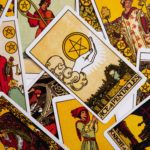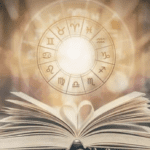Generation Black TV - Live
The Goths and the Gays: Why Goth is so Important for the LGBTQ+ Community
The Goths and the Gays: Why Goth is so Important for the LGBTQ+ Community
[simple-author-box]
With its dark romantic aesthetic and openness to androgyny, is it any wonder that goth is gay? Well, it’s not, because clothing and styles don’t have a sense of gender or sexuality. But goth is gay. Goth is queer, in its own way. I remember as a teenager, having a few goth male friends – all cisgender and heterosexual – and yet their long hair and androgynous clothing style meant that they were the subject of teasing. Why are so many queer people drawn to gothic fashion? Is it its subversion of traditional masculinity and femininity? Is it its acceptance and even appraisal, of all things weird? Historically speaking, queerness has been branded as “weird”. The word literally means “strange” or “peculiar”. Many goths have liberal and left-wing views, and are accepting of LGBTQ+ people, possibly because of the association of “strangeness” with being queer.
Goth is still branded as “odd” and “scary”. Similarly, so is the LGBTQ+ community at times. A fear of queerness is still ingrained within our society, as it’s an “unknown” and it differs from the heteronormative roles that many grew up with. In this way, we can see how being goth and gay works. Goth also gives people the opportunity to explore their gender expression and identity. In trad goth (“traditional goth”), women tend to present as very femme, wearing a full face of makeup, dresses, and long hair. Their male counterparts, however, often also sport long hair, and even dabble in genderbending, regardless of their sexual orientation. Straight goth girls don’t see straight goth boys as any less straight, just because they have long hair and wear makeup, whereas the rest of “non-goth” society might, because of the rigid gender norms that goths tend to reject or play around with.
Sexual orientations that are otherwise unknown or shunned, such as bisexuality and asexuality, are also widely accepted within goth subculture. Men are allowed to look like women, women are allowed to look like men, and those who don’t identify as either, are simply allowed to be. Tolerance of trans and nonbinary people within goth culture is more than visible; it’s blatant. Goth also queers fashion in ways that many other subcultures do not. Punk, which is a subset of goth and alt almost completely eradicates the concept of gendered clothing entirely, with its DIY attitude and gender-neutral style. Mohawks, biker jackets and combat boots were worn by all, and not particularly attributed to gender. Many within the LGBTQ+ community joke about lesbians claiming goth as their own, but in many ways, its true. Girls in fishnet tights and thigh high socks are gay. It has become somewhat of a meme among younger gay people and goths, and those who are both.
Street goth is also something I feel I should mention. It’s relatively new compared to other goth styles. Street goth is streetwear, with a twist – using gothic Renaissance art printed on sweatshirts and hoodies to make a statement, and of course, the use of a muted, predominantly black colour palette. Street goth is also inclusive of all ethnicities, similarly to traditional goth. Although originating from black streetwear and fashion, street goth is a blend of both black and white fashions. Goth, despite its inclusivity, is still predominantly viewed as a “white people” thing, and streetwear is still commonly associated with the back community. Bringing these two styles together creates an inclusive, radical gothic subculture that celebrates diversity, working class backgrounds, and people of all identities.
We tend to see view goth as a modern phenomenon, but the origins of goth date back to the Victorian times, and in some cases, even earlier – gothic inspiration can be found from the Renaissance period (14th century – 17th century), as well as the Romantic era (18th century). It was these artistic and architectural designs that inspired the gothic movement of the early 1980s. “Goth”, whilst not yet an existing subclulture, also played a part in 1920s fashion. Women wore dark lipstick and heavy eyeliner, contrasting the more conservative looks of the Edwardian and Victorian eras that came before them. Much of Weimar fashion was inspired by gothic styles, and the Weimar Republic was thought to be one of the most forward-thinking societies of its time. Although homosexuality was still frowned upon, Germany during the 1920s, particularly its capital, Berlin, was largely tolerant of gay people. It was not uncommon for middle-class British and American gay men to move to Berlin in search of a better life, as they were more easily accepted and less likely to face discrimination or abuse.
Halloween is another shining example. Halloween is gay Christmas, or so I’ve been told. I can see the reasoning behind this; many gay people might not feel that Christmas is inclusive of them, especially if coming from a traditional Christian family, and family gatherings can make it hard to be out and proud if those around you are unaccepting. Halloween is the celebration of all things weird and creepy, and, although wrong, some still view being gay as “weird and creepy”, and thus, queer people often feel that they are freer to express themselves at Halloween events and parties than say, at a traditional Christmas gathering or activity.
Goth celebrates darkness, romance, mystery, fantasy, and horror. It is still frowned upon by the more conservative in society, and yet gothic fashion and mindset seem to be making a comeback, especially amongst Generation Z. Choker necklaces, platform boots and grungy makeup are popular style choices, and goth is here to stay. Whether it’s the genderbending, the dramatic makeup inspired by drag queens, or just it’s affinity with anything fantastical and “strange”, gothic fashion and culture has been welcoming to LGBTQ+ people for years, and it will continue to be so for years to come.


